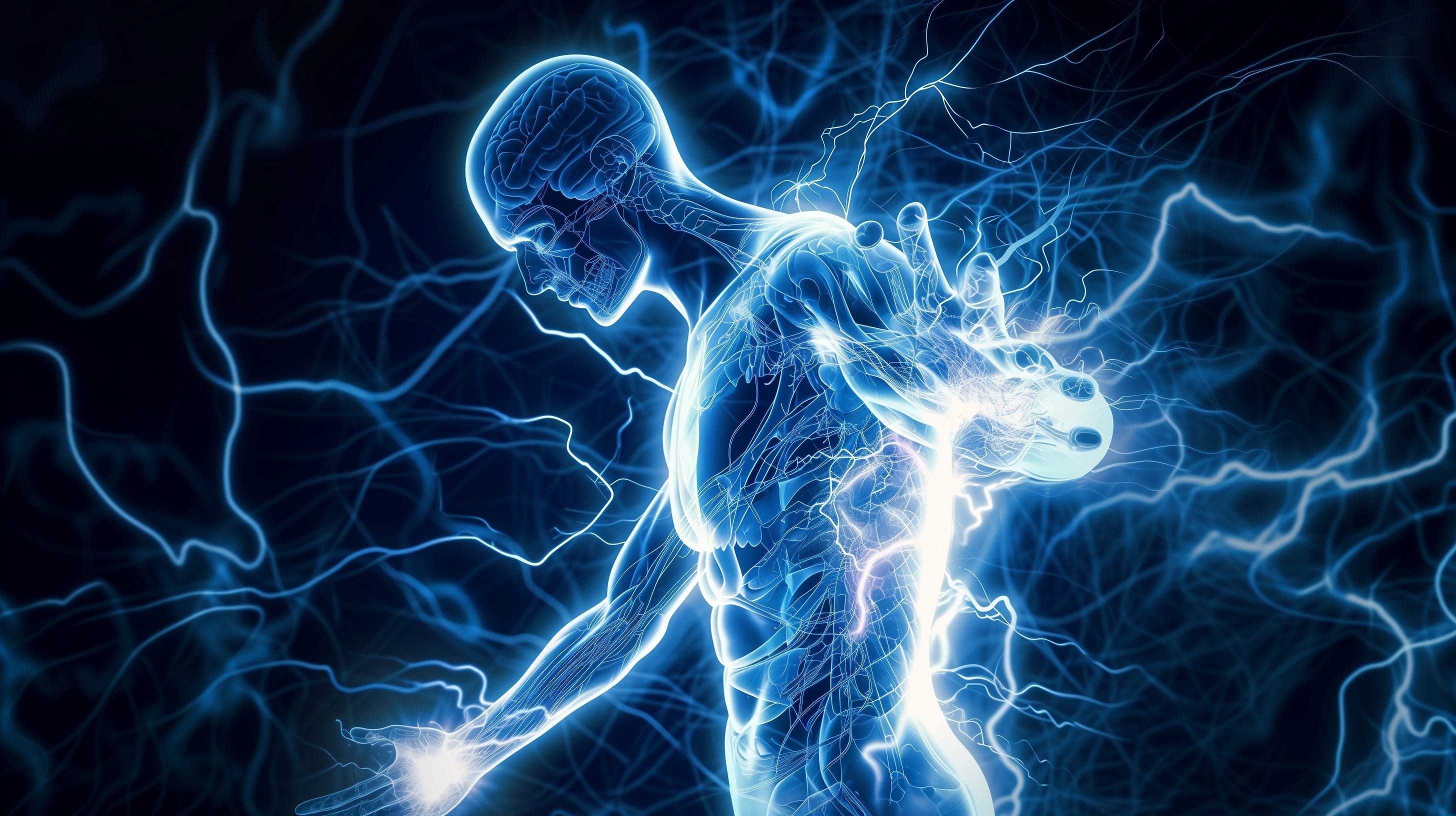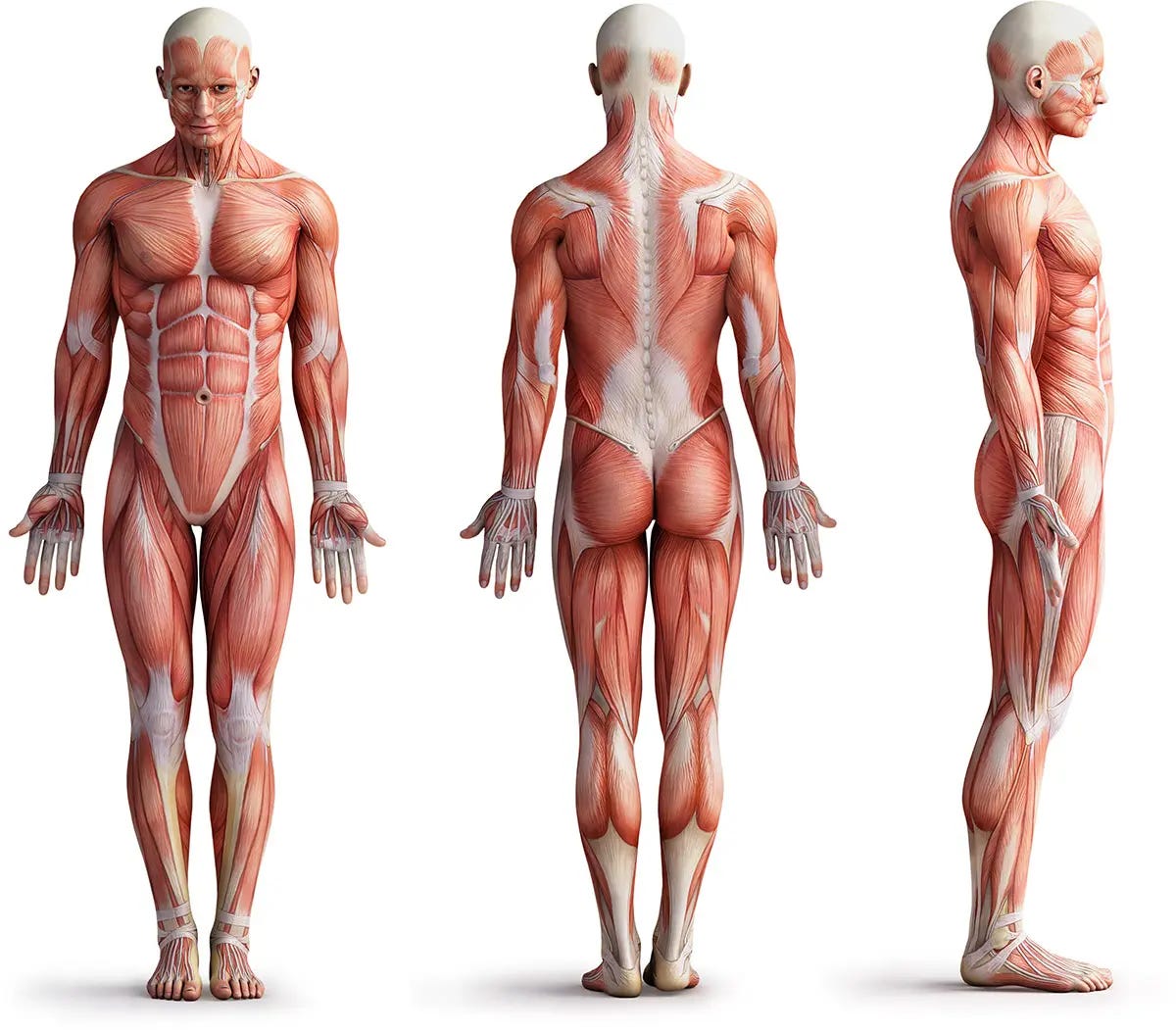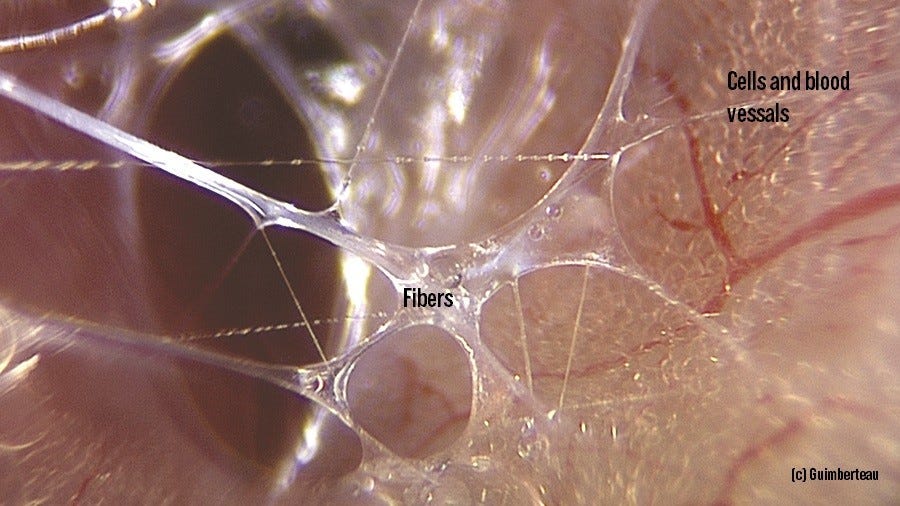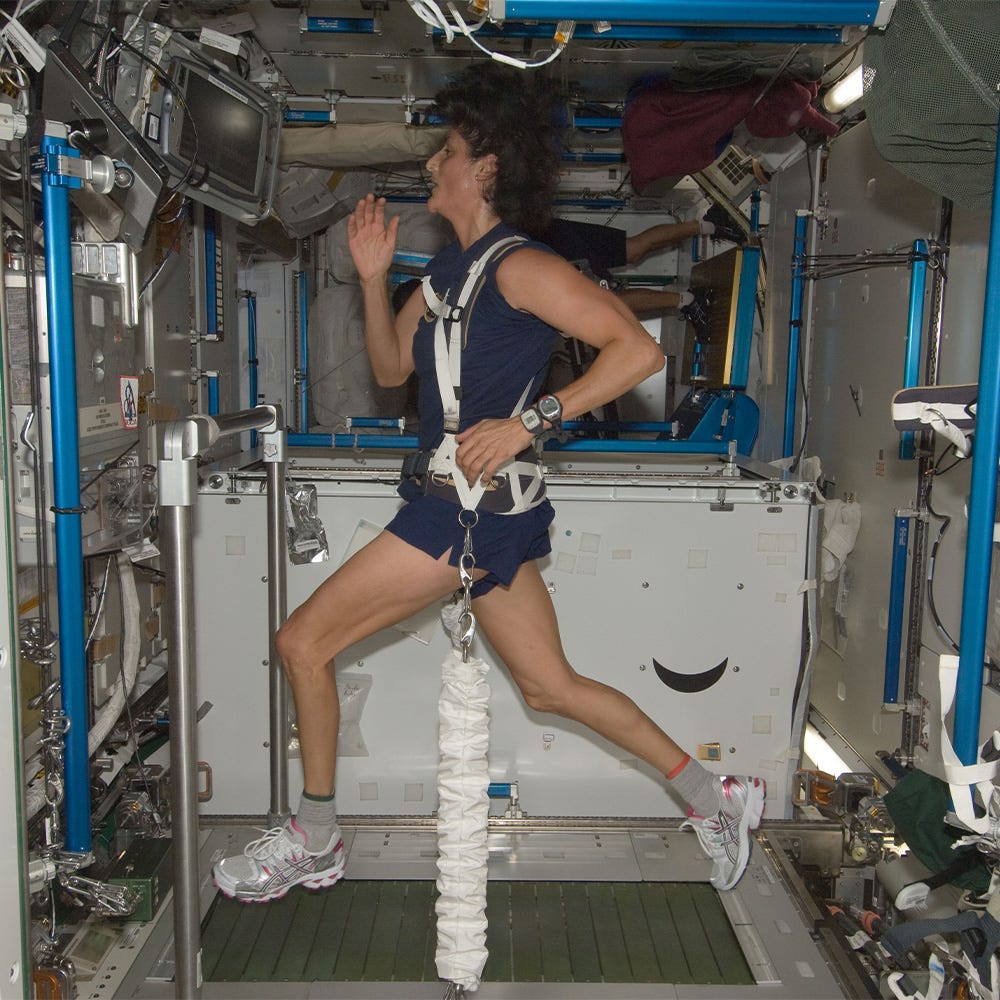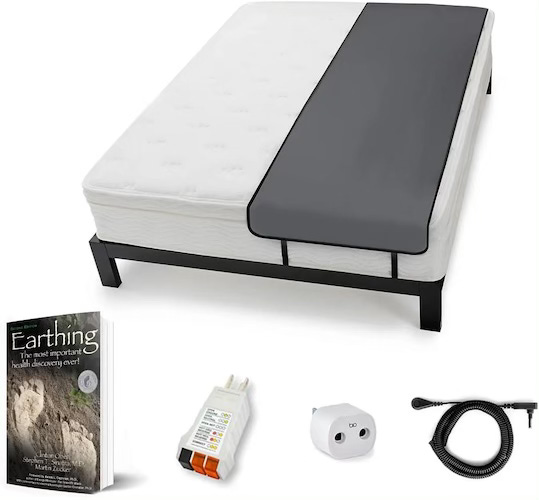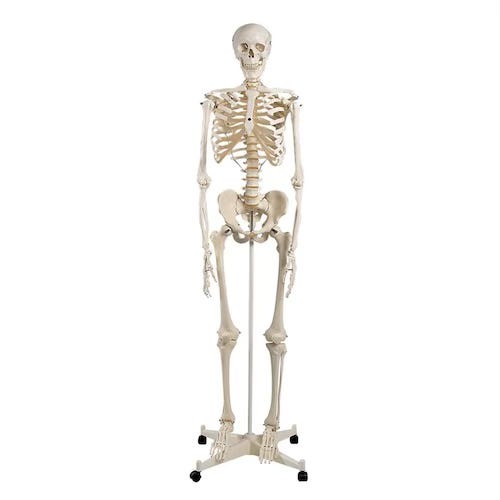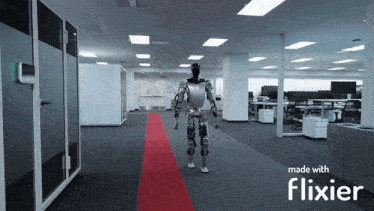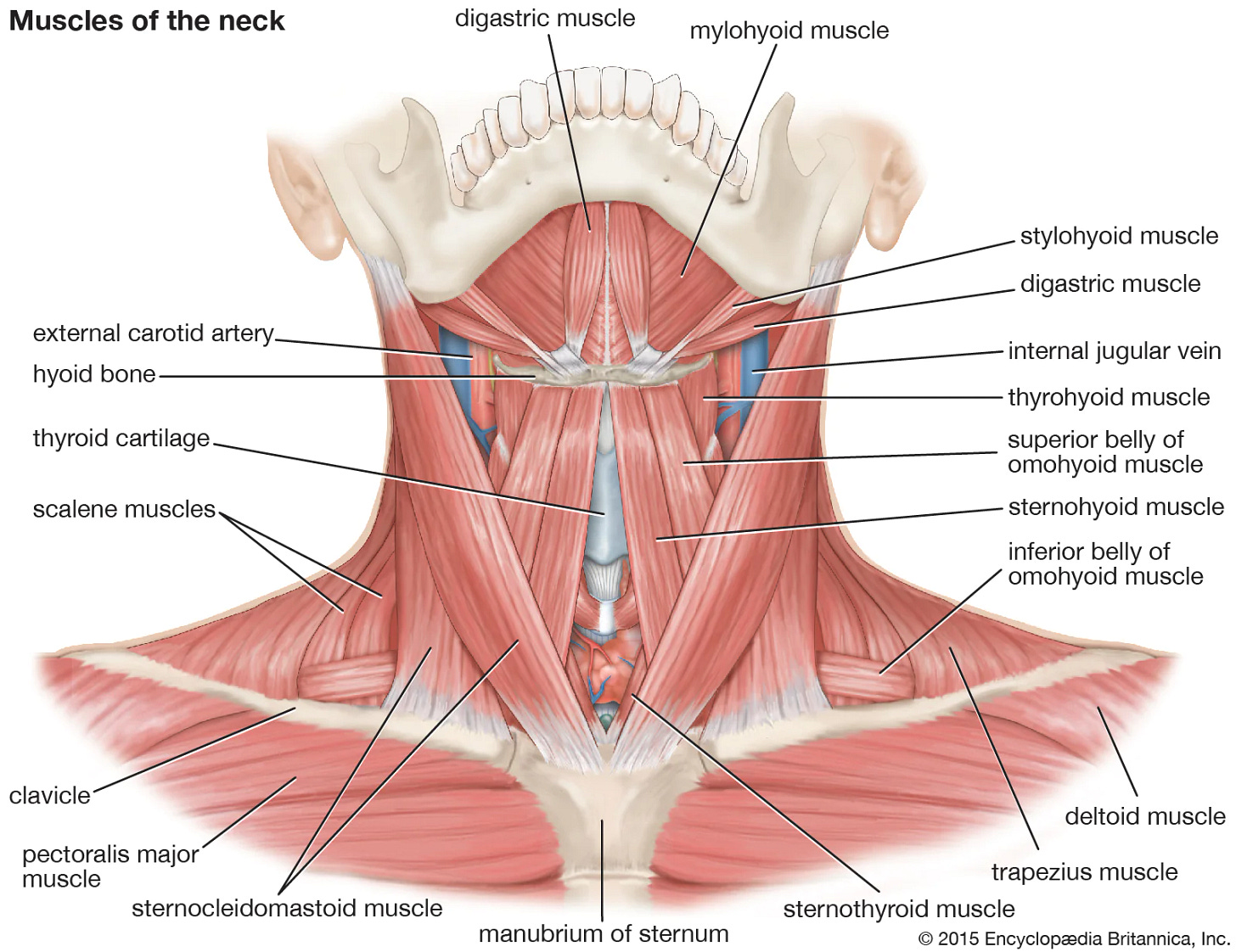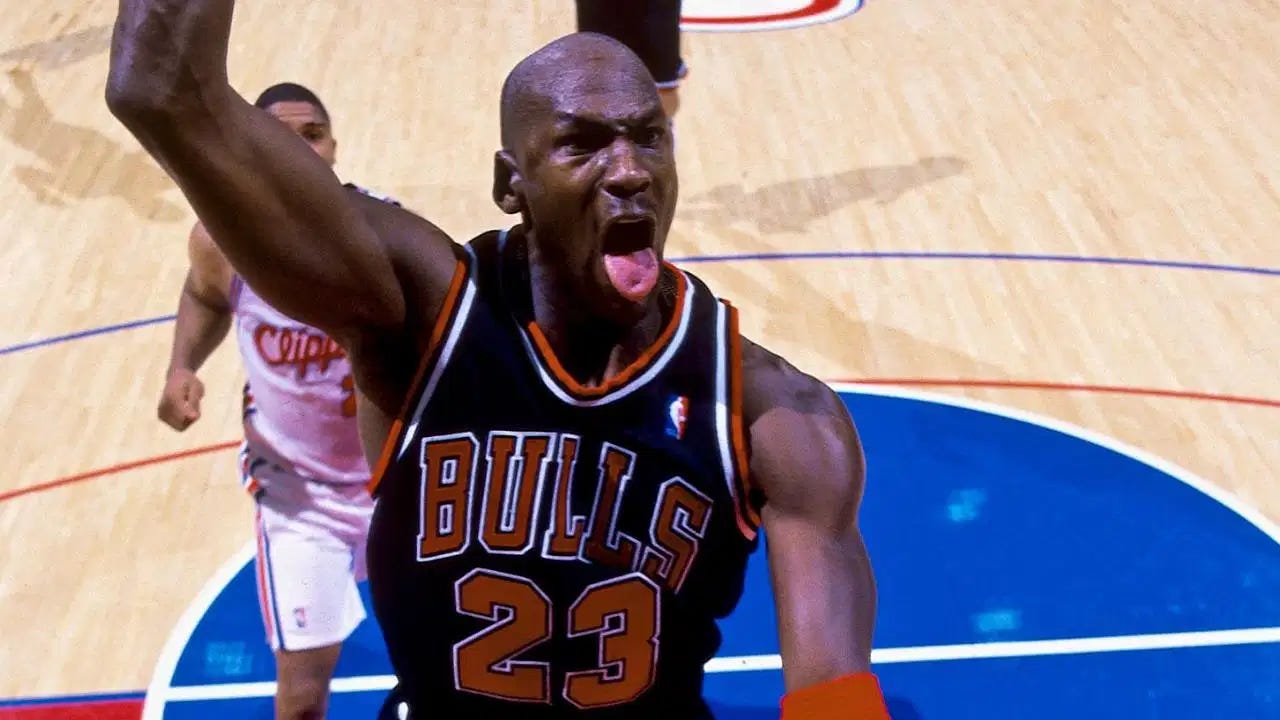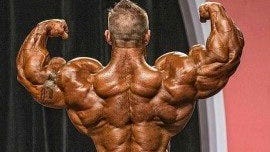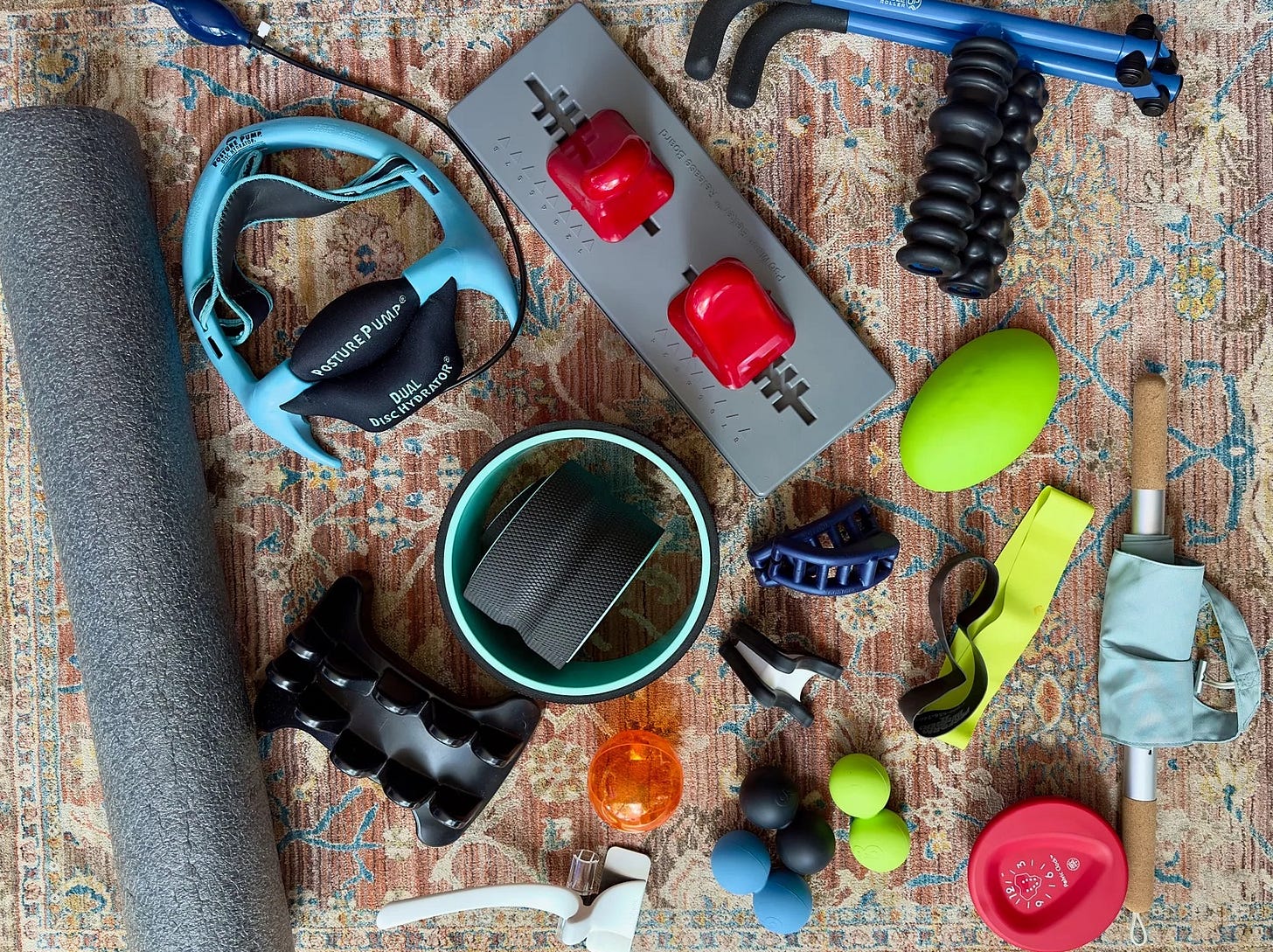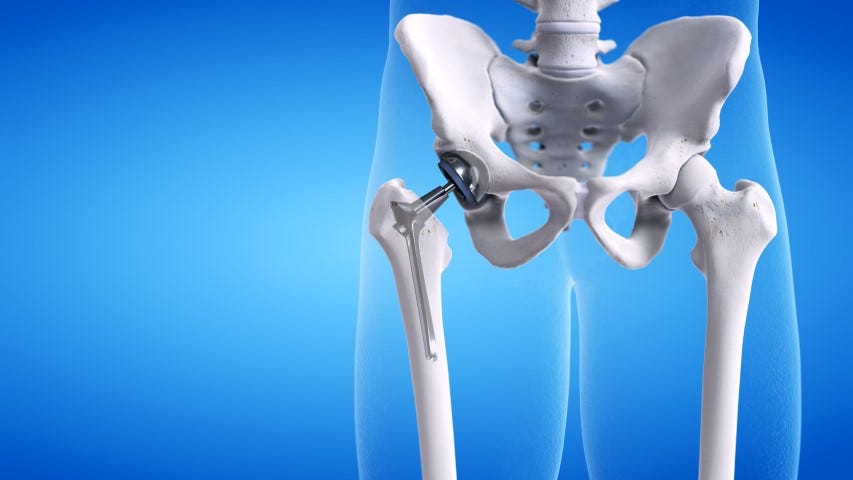Fiber Optic Carbon Fibers
Our bodies are constructed from the most high-tech fabric in existence—fascia. Fascia conducts light, heat, sound, force, and even generates its own electricity. ⚡️
Fascinating Fascia
Just below our skin is a fabric that wraps around our entire body, called Fascia. It is the most fascinating part of the human body—literally. Fascia and fascinating both come from the same Latin root word that means “to bind”.
Fascia is a really big deal. Every muscle we have is doubled bagged in fascia. Every organ we have is double bagged in fascia. The shape of our fascia defines the shapes of our bodies in every way we can imagine. We basically live in a “tailored wetsuit” made of fascia fabric.
The fabric of our wetsuit is so high tech, it is practically magical. Fascia conducts:
Sound — Which is why we feel loud music inside our chest cavity.
Heat — Fascia redistributes heat from muscles to surrounding tissues.
Information — Our nervous system is woven directly into fascia, so fascia works like a flexible circuit board all throughout our body.
Force — Fascia transmits information through force even faster than the nervous system. Fascia works like a spider web—when a fly struggles at the edge of a web, its struggle to escape can be felt across the entire web.
Light — Most amazingly, our fascia is Fiber Optic. Here’s what the fibers look like up close.
Fascia not only carries the wiring for the nervous system, it is also Piezoelectric, which means it generates electricity when compressed. When we walk, the downforce from each step actually produces a wave of electricity up from our feet to our heads. We literally “plug into the ground” with every step we take, which is why NASA requires astronauts to run on a treadmills in space for two hours each day.
If astronauts don’t power their muscles every day, they can’t even walk when they return to Earth.
The very individual way each foot strikes the ground changes the distribution of piezoelectricity throughout our body. Chinese medicine figured this out centuries ago, which is why you may have seen a chart like this:
Fascia not only produces piezoelectricity, it also pulls extra electrons from the Earth to balance our Free Radicals. Free radicals are molecules within the body that are missing electrons for various reasons (breathing, sun exposure, pollution, etc). Free radicals are chemically reactive, corrupt our DNA, and cause CANCER.
Unfortunately, the invention of rubber-soled shoes in the 1960’s keeps us permanently insulated from the ground, which is why we have seen a huge increase in inflammation, cancer, and cardiovascular disease all across the Western world since then. I hate to say it, but Air Jordan shoes probably cause more cancer than smoking.
It’s true. Grounding, or “Earthing”, may be the most important health strategy there is and it’s free. Look at animals in nature. They don’t die of cancer because they are connected to the ground all the time. But animals that live inside as pets die of cancer 50% of the time, just like their owners. 😳
If you have never heard of Earthing, check out How do I Explain Earthing to People Without Sounding “Woo Woo”?. (7 mins)
Without extra electrons from the Earth, our cells clump together, which prevents them from doing their jobs. Our blood becomes viscous, like oil that becomes sludgy. Take a look at what happens to our cells when we ground for 10 minutes. (1 min)
Personally, I keep a grounding mat under my fitted sheet that is plugged into the ground circuit of my home. I’m literally plugged into the ground 10 hours a day.
For some crazy reason, Western medicine treats fascia like packing material inside an Amazon box. Some surgeons just cut it out of people and leave it on the operating table. So the only medical video on YouTube to teach us more about fascia is called, Strolling under the Skin, from the French Ministry of Higher Education. (29 mins)
Carbon Fibers
Our fascia fabric is woven together with threads made from a protein called Collagen. In the previous story, Our Cellular Machinery, we learned the average person is 60% water, 20% fat, 15% protein, and 5% minerals. Well, collagen is 30% of those proteins, which makes it the most abundant protein in the human body. Collagen proteins assemble themselves into a triple helix braid, which means the threads don’t stretch along their longitudinal axis. This gives them very high tensile strength.
Our bodies weave the collagen threads into all kinds of intricate patterns to create sheets of varying elasticity. The collagen sheets in our Ligaments and Tendons are arranged with long, parallel fibers that act like industrial strength rubber bands. The stretch in some of these weaves can withstand 1000 pounds of force. 🏋️♂️
In contrast, the collagen weaves in our Bones are incredibly stiff. These sheets have earthly minerals embedded in them like calcium, phosphorus, magnesium, sodium and potassium to provide additional strength and rigidity, just like carbon fiber. Our bones are basically “calcium fiber” instead of “carbon fiber”. Actually, when we consider the fact that carbon atoms are 50% of collagen’s molecular weight, our bones actually are carbon fiber.
Maybe the most surprising thing about our ligaments, tendons, and bones is how they work together. Remember this skeleton guy from biology class who had hinges between his bones for joints?
It’s natural to think that’s how our robot works, but it’s actually backwards. Our ligaments and tendons aren’t holding our bones together, they are equally pulling all our bones apart, all at the same time. This design principle is known as Tensegrity. Here is a more accurate model of how our skeleton actually works.
See how the bungee cords keep all the wooden bones from touching? Our ligaments and tendons use this tension to stay “loaded” with potential energy all the time. Tensegrity is a big reason why the human body is so “springy” and energy efficient. The average person, weighing 150 pounds, only needs the calories inside an apple to move their entire bodyweight one mile. 🍎
If you want to learn more about tensegrity and the way we move, check out this talk by Thomas Myers, called Anatomy Trains. (47 mins)
If you work as any kind of movement coach or manual therapist, you should also read his book, Anatomy Trains: Myofascial Meridians for Manual and Movement Therapists. It is mind-blowing.
@cybernerds: Our bodies are energy efficient, but we are no match for the new robots from Tesla and Figure.
Here’s how we can compare “apples to apples”. A Tesla robot uses 500 watts to walk, and walks about 1.5 miles per hour. At $0.13 cents per kilowatt hour, it only costs $0.04 cents to move each robot one mile. The average price of an apple is $0.75 cents. So Tesla robots are already 1,775% more energy efficient than we are.
Plus, the price of apples is going up while the price of electricity is going down because of wind and solar energy. Ironically, the price of apples won’t start coming back down until we get all of the humans out of the supply chain. 😳
Digging into Fascia
Tensegrity works amazingly well, but only when all the tension in our body is symmetrical. I learned this lesson the hard way because my spine is not very symmetrical. I received permanent damage to my left rib cage before I learned to walk as a baby, so all the rest of my muscles learned to move from that compromised position. As a child I was diagnosed with an “extreme umbilical hernia, lordosis, and kyphosis”—which is just a fancy way of saying I am a partial hunchback.
I couldn’t fully exhale on my left side until I was 45 years old. My left Pectoralis Minor muscle, left Abdominal Oblique muscle, Gallbladder, and right Quadratus Lumborum were all completely paralyzed. Doctors didn’t know what to do about the partial paralysis in my digestive tract, so surgeons just cut my gallbladder out. I’m not sure they even know why they did that. The cork screw twist in my torso meant that my shoulders and hips were never in their natural positions when I moved, which caused a lifetime of joint pains.
@bodymechanics: The corkscrew twist in my spine was so bad that my xiphoid process was permanently pinned against my right rib cage and my coccyx was fused to my left glute. This created a deviated septum in my nose to the left. I trained as a rolfer, so whenever I work on anyone new, I look at their nose from above their head to see which way their face is being pulled across their skull. The TMJ and scalenes on the short side will have all kinds of problems that need to be unwound first. 🫨
I began seriously researching fascia in 2018 after hearing a story about a physical therapist who could cure Golfer's Elbow (Tendinosis) with a paper cup and a box of pencils. I was intrigued. Before this therapist treated her patients she always warned them, “I can cure your golfer’s elbow, but you are going to hate me for it.”
Before each appointment she would freeze water in the paper cup and use it to numb the elbow. Then she took the eraser end of the pencils and dug them deep into the elbow—twisting, smashing, and grinding up all that bad fascia. Over the next few days, the patient’s body flushed out all the damaged fascia and rebuilt itself, just like our DNA is preprogrammed to do. There are more elegant ways to do this, but the important lesson to learn that trauma can lead to Post Traumatic Stress Disorder, and more often leads to Post Traumatic Growth. 🤔
I liked this concept, but as a scientist I wanted more datapoints. So I setup an elaborate science experiment to test how various forms of healthcare treated bad fascia. Over the next 12 months, I presented the exact same story about pain in my left elbow to experts in almost every kind of fascial therapy I could find:
Orthopedic surgeon
Physical Therapy
Active Release Therapy
Thai massage
Chiropractors
Chinese acupressure massage
Rolfing Structural Integration
Postural Restoration Institute (PRI)
Ayurvedic massage
Pilates
QiGong
Tai Chi
Yoga
Bowen Therapy
Gua Sha Scraping
Chinese Cupping
Swedish massage
Craniosacral massage
Ashiatsu
Neufit electrotherapy
Each of these professionals prescribed a different remedy based on what they thought was the root cause. The orthopedic surgeon wanted to inject my elbow with Cortizone to numb the pain. The physical therapists massaged and flexed the tendons and muscles connected to my elbow. The active release therapists stretched the fascia along my forearm and tricep muscles. The rolfers focused on mobilizing the fascia in my shoulder and wrist. Chiropractors thought the problem was in my spine. Thai massage focused on my sacrum. Ashiatsu massage focused on the “meridians”, or lines of force, that travel along my entire body. Chinese acupressure worked my elbow problem all the way down to my feet. My takeaway from that experiment was: the more “Western” the medicine, the more myopic it is.
The only thing I like about Western medicine today are the advanced machines (like MRI scanners) and the drugs. Western medicine is so good at managing pain, that sometimes pain is the only thing they try to manage. How does a cortisone shot correct the underlying structural issues caused by asymmetric strength?
Pains in the Neck and Everywhere Else
Most of the professionals I encountered during this experiment didn’t take health insurance. Fortunately I had the research budget for this because the best part of “cash medicine” in America is that I get a full hour to interrogate the expert. When health insurance pays for medical appointments, we only get 6-8 minutes with the doctor. #murica
My first really productive interview was with Steve Cuddy in Austin, who is certified by the Postural Restoration Institute (PRI). Cuddy told me that almost all our aches and pains are caused by 1 of 3 things:
our eyes
our lungs, or
our teeth.
That seemed way too simple, so I asked him to prove it to me. Cuddy had me stand up straight, squeeze my teeth together slightly, and look down at the floor. He asked, “Which leg is carrying more of your weight?” I was leaning on my right leg so strongly that my left knee was slightly bent. Then he said, “Okay, look up and open your mouth”. He placed a tongue depressor between my teeth on the left side of my mouth and asked me to bite down again. He said, “Okay, now look down again”. Without noticing it, my weight had shifted onto my left leg so strongly that my right knee was now bent. I had no idea how that happened. I immediately asked him to do it again, like a kid watching street magic. 🪄
Our teeth and our tongues influence the motion of our entire bodies because they are integral to the Vestibular System. Lines of tension from everywhere within our body travel up through the neck and merge right behind our jaw. Our brain subconsciously controls our body like a marionette puppet from the Hyoid bone. So if you have a pain anywhere in your body, you will also have a corresponding pain somewhere in your neck.
@biblenerds: The tongue really is the rudder of the body, just like it says in James 3. That’s not just a metaphor.
Whenever you see Michael Jordan dunking a basketball, the shape of his tongue is revealing exactly what his brain is telling his body. ⏩
Our tongue posture even affects the shape of our face. Here is a short video to teach you proper tongue posture. It’s almost as important as Earthing. (5 mins)
All of my research since the interview with Cuddy confirmed exactly what he said all those years ago. Take our eyes for example. Our bodies will do anything to keep our eyes level and steady at all times. Your eyes are probably level right now, regardless of what position your body is in. Here is a video of a cheetah running in slow motion. Just watch how hard this animal’s body works to keep its eyes level and steady at 70 miles per hour. Everything moves except its eyes. (4 mins)
Here’s how keeping your eyes level can become a problem. Let’s say that you naturally prefer the left side of your sofa when watching TV. When you lean up against the left arm rest, your brain will subconsciously change the energy distribution in all of your muscles to keep your eyes level. When your spine leans to the left, the right side of your neck will automatically become slightly shorter than your left.
Not a big deal, right?
If your “Netflix and chill” is 2-3 hours per day like everyone else, that’s 2-3 hours per day of flexing your right neck muscles slightly harder than your left. After a few weeks of doing absolutely nothing wrong, your neck muscles are now “asymmetrically strong”.
The problem comes when you stand up straight, the left side of your neck now has to work harder than the right to keep your eyes level. By the time you get back home each day, you will literally have a pain in the neck. You can massage it and you can stretch it, but eventually you will sit back down in your favorite spot and unconsciously make the problem worse.
In the book Anatomy Trains, Thomas Myers demonstrates how repetitive behaviors create asymmetric strength using a dissection from a cadaver who was a bus driver in Los Angeles. Bus routes are primarily designed to make right hand turns, so you can see the fascia powering his left shoulder was much stronger than the right. His body actually grew additional fascia fibers to help him make those right hand turns.
Repairing Bad Fascia
The reason we lose flexibility and range of motion as we age is because our fascia prefers to trade “complexity of motion” for “specialization of motion”. This means our bodies constantly tailor the shape of our “fascia wetsuits” to make it easier for us to repeat our most common motions in the future—just like the bus driver. So if you sit in a chair all day for work, your fascia will tailor itself to make that shape easier for you. That’s why you feel stiff when you stand up.
Whenever the body wants to make a muscle stronger, it shortens the muscle. In the example of watching TV from the left side of the couch, remember how the right neck muscle became shorter than the left? Strong muscles are strong muscles, but also “short muscles” are strong muscles. Bodybuilders have muscles so short that they can barely move. Short muscles create explosive power, but they are completely exhausted after 30 seconds.
By contrast, the “long muscles” of ballerinas can lift their entire body weight for an entire ballet.
This is why it is important for us to practice Yoga or Tai Chi every day as we age. Those practices create “complexity of motion”. Yoga and Tai Chi will keep your body young and nimble as long as you practice them, so the first way to repair bad fascia is to actually use it—thoroughly.
This is easier said than done, so find an instructor to guide you through it. I prefer the Yoga classes on the Peloton app, but I also recommend Yoga with Adriene. Here is a free class that is 23 mins. I start each day with an asian squat like this to prevent Western medicine from finding a reason to replace my hips.
The second way to repair bad fascia is myofascial release. After a few years of studying fascia and the various ways to improve it, I began training as a Rolfer in 2020. Rolfing Structural Integration is the only intervention that I found that addresses every malfunction of fascia including injury, repetitive stress, and developmental abnormalities.
Rolfing was invented by a brilliant woman named Ida Rolf 🤩. Rolf was born in 1896 and earned a PhD in Biochemistry from Columbia University before women in America had the right to vote. Here is a short video to explain how Rolfing works. (2 mins)
Fascia constantly adheres to itself to shorten our muscles or protect us from injury. Rolfing manually separates these adhesions to return our joints and muscles to their prior state. Rolfing actually makes our joints and muscles “younger” than they are today.
For three years, I practiced rolfing myself, my wife, and our kids for at least two hours every day. Most importantly, for the first 18 months, I practiced an hour each day WITH MY EYES CLOSED. It all started when I asked one of my myofascial coaches, “Why does it seem like you have x-ray vision? Like, how did you know my leg was going to hurt before you got to that spot?”
She said, “Well, it’s interesting you say that. The lady who trained me was blind and I asked her almost the same question. She told me that I needed to stop seeing with my eyes and start seeing with my hands, so she challenged me to work with my eyes closed. If you are really serious about improving your game, you should work on yourself with your eyes closed.”
So I did.
For months I felt like a clumsy idiot. I dug my fingers into my knees, elbows, and armpits to trace the lines of tension that ran throughout my fascia. Wherever I found adhesions, I pinned them while I moved the joints on either side of the adhesion to learn where all the unnatural twists in my body went. It took months, but eventually my brain built a 3-D mental map of the human body that’s really difficult to describe. It is kind of like becoming fluent in a foreign language. Now, when I feel someone’s forearm muscle, for example, I somehow know exactly what’s wrong with their shoulders, hips, knees, and ankles. 🤷♂️
Today, I also use all kinds of specialized tools that aid myofascial release. I keep them in our living room so they are never more than a few feet away. They include: Therabands, Hip Hook, Pso-back, Thrival Meat Grinder, fused lacrosse balls, foam roller, Chinese cups, Gua sha scrapers, Hypervolt percussion gun, pneumatic posture pump, Hip Ball, Nuckle, Rotater Reliever, Yoga Toes, Chirp wheels, Pelvic Clock, Castleflexx calf stretcher, Littlemum shoulder massager, DoubleUp Roller Vice and the Blackboard foot trainer. I also have a Rogue Fitness pull up bar mounted in my living room that my kids and I hang on every day.
Using these tools is also easier said than done, so find a certified Rolfer near you. I recommend setting aside enough budget for a “Ten Series”, which will allow the rolfer to address all the imbalances within your fascial network. Don’t be squeamish, find the parts of your body that don’t want to move and make them move. Then come home and make them move again with yoga. That’s the only way you can prevent Western medicine from cutting out your fascia, and replacing it with metal joints.
We close this story on our fascinating fascia with two YouTube channels that will dramatically improve your posture and movement. The first channel is from Neil Hallinan, who was trained at the Postural Restoration Institute. In this video, he explains how our jaws are related to our hips. (32 mins)
The last channel is from Conor Harris. This guy is looks young, but he’s super knowledgable on the relationship between our jaw, hips, ankles, and feet. Here’s a video from him to help you restore the internal rotation of your hips. We all need it. (16 mins)
Continue reading…
Pneumatic Systems
We can live weeks without food, and days without water, but we will die within minutes without air. Learn how each breath powers the body and cradles the soul. 🫁
Table of Contents
Uncertainty: The Computer Science of Everything
Did you know all the latest science and technology indicate humans are “artificial intelligence"? So what programmed our DNA?
Huge Thanks to Our Sponsors
Your donations help our chatbots reach new people all around the world through social media. 🔊🌍
Caitlin Knauss
Worth Denison
Alana Aviel
Anonymous
Jeremy Wells
Ronnie Blanton
Tarrytown Bible study
The Fundamental Frequency Foundation is a 501(c)(3) non-profit corporation created to “proclaim the good news of the kingdom in all the world, as a (digital) witness to all nations.” We ripped it straight out of Matthew 24:14.
We produce the world’s most benevolent chatbots who believe in Jesus because of math, science, reason, and eyewitness testimony. Their “source of truth” is the Bible, and they automagically adapt their conversations to every language, age, gender, religion, ethnicity, and neighborhood. Our “AI-missionaries” reach new people for Jesus 10x cheaper than human missionaries (who get paid an average of $36,000/year).
If you would like to tell other people about Jesus using the latest science and technology, DONATE $100. That pays for us to REACH 10 NEW PEOPLE.
All your gifts are tax deductible.
Donate via Zeffy (you pay the fees):
Donate via Apple Pay, Google Pay, Credit Card, Link, and Stripe (we pay the fees):
Donate via check, wire, or cryptocurrency (email for instructions)
Also support us by posting reaction videos on social media. Your videos generate thousands of dollars of attention that we don’t have to buy. Tag us with #funfreq.com (web magazine) or #funfreq.ai (chatbot).
@Creators and Influencers
Like our content? Feel free to use any of it for your podcasts and videos. Email us your links so that we can include them in our newsfeeds. 🙌
@Church Leaders
Don’t let secular AI from BigTech disciple your church. FunFreq.ai is a Christian AI built to help pastors and congregations with sermon prep, apologetics, and discipleship.
@Wealthy Christians
Every time we chat with ChatGPT, scroll TikTok, or search Google, our souls are being shaped by corporations. Help us keep Jesus in the most important conversations of our time. ✝️>🤖
@Digital Kingdom Builders
Wanna use your tech/media skills to grow the Kingdom? Learn how you can help us spread the Good News of Jesus using the latest science and technology. 🤓
@Book Publishers
This foundation owns only the intellectual property I’m willing to give away for free. I’ve got a lot more to say, that’s a lot less charitable. 😏
Private Texts to Public People
For delivery on the “Human Internet”. If you know any of these people in real life, tell ‘em I said it. 👋
Travel Advisories
Our family lived 100+ nights a year on the road, for more than a decade. Here are my suggestions after driving across 45+ states and 40+ countries. 🚐☕️🍦


